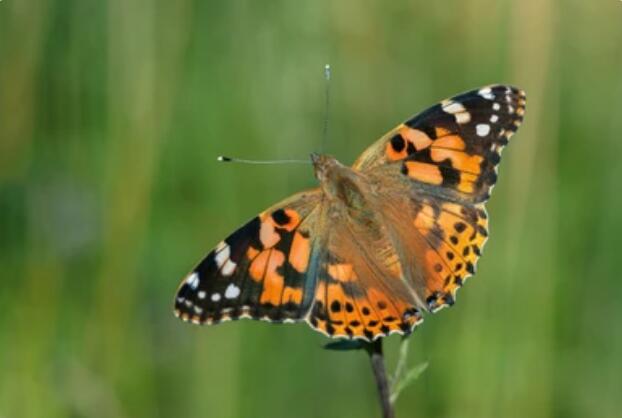The Vanessa cardui belongs to the Nymphalidae family of Lepidoptera. It is distributed on all continents except Antarctica and South America and is probably one of the world's most widely distributed butterfly species. Vanessa cardui is a fully metamorphic insect, passing through the stages of egg, larva, pupa, and adult. Adult butterflies nectar on various plants, especially those in the Asteraceae family. Because of the ease of rearing, it is often used as a textbook for learning about the life history of butterflies.

Vanessa cardui has orange and brown on the back of her wings, making an excellent model for studying color pattern formation. Using CRISPR-Cas9 genome editing technology, Lifeasible can help you understand the developmental genetic mechanisms underlying the formation of wing patterns and can provide insight into the evolution of adaptive traits such as predator avoidance and mate attraction in Vanessa cardui.
| Editable genes | Relevant traits exhibited after editing |
| Ddc, pale, ebony, black, yellow, yellow-d, yellow-h2, yellow-h3 | Changing melanin pigmentation by knockout. Melanins and ommochromes, the pigment types characteristic of the significant butterfly family Nymphalidae, are diverse and abundant in this species. |
| Abd-B | Formation of extra prolegs by knockout. |
| optix | This gene controls the various colors on a butterfly's wings. |
| WntA | This gene plays a crucial role in forming the pattern of butterfly wings. After knocking out the WntA gene using gene editing, the centrosymmetric stripes on Vanessa cardui's wings disappeared. |
| spineless | Altered color vision. |
Lepidoptera insects are rich in species, have extensive interspecific hybridization, and have diverse wing patterns, making them a classic system for studying adaptive evolution. With CRISPR/Cas9 genome editing technology, Lifeasible can help you develop more possibilities for Vanessa cardui wing patterns and further explore the mysteries of its evolution. Please feel free to contact us to develop an editing system for your essential genes.